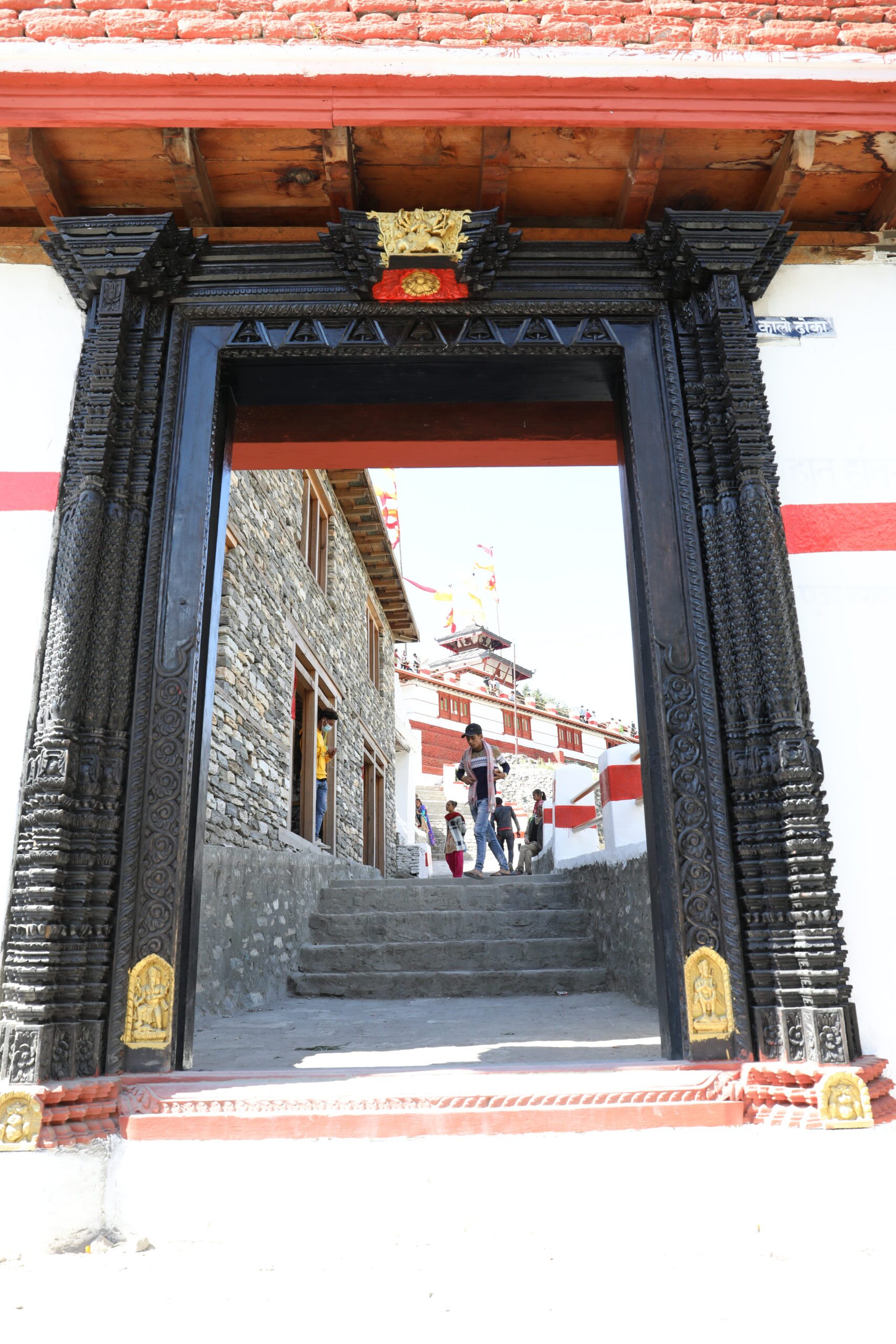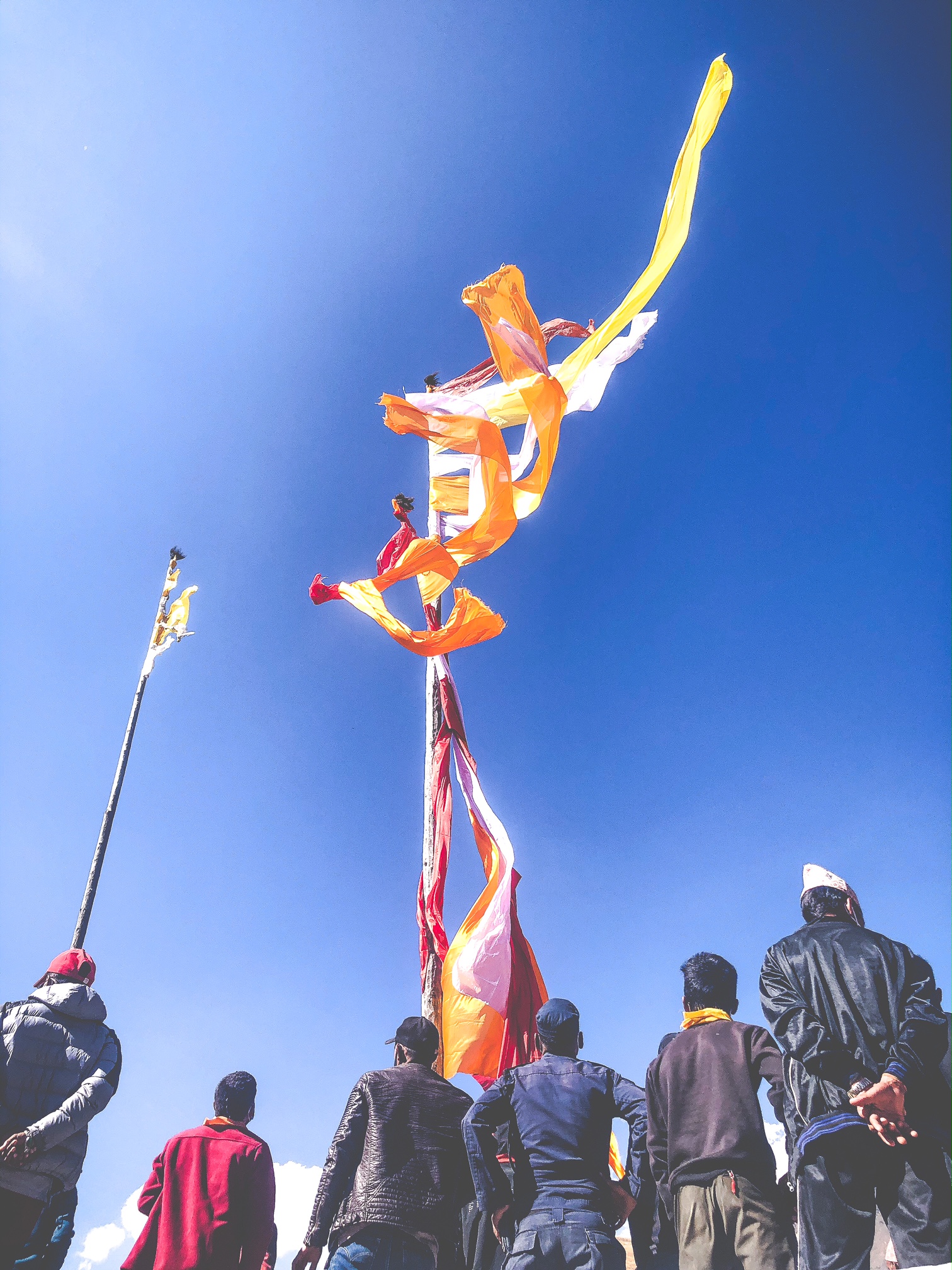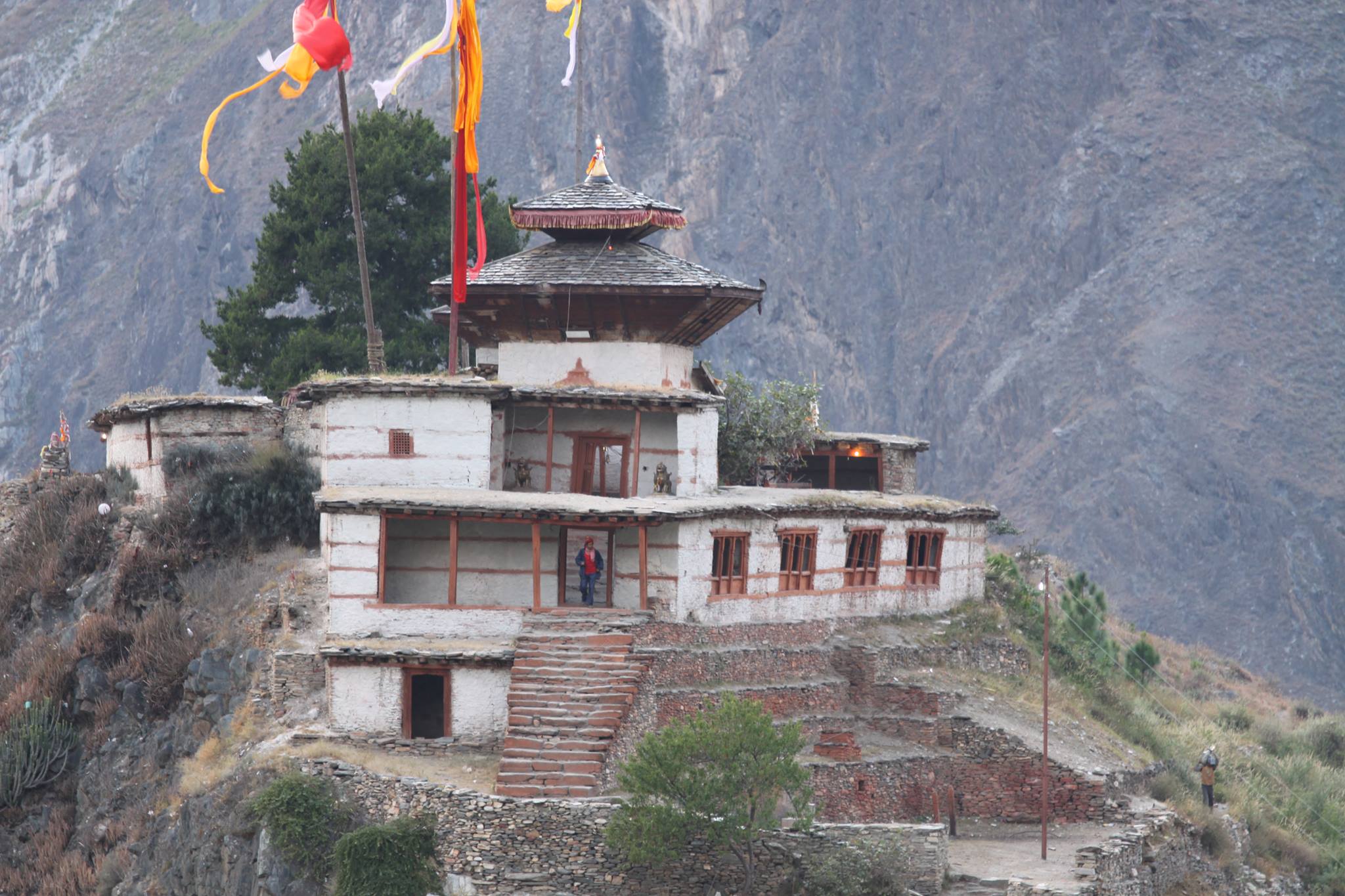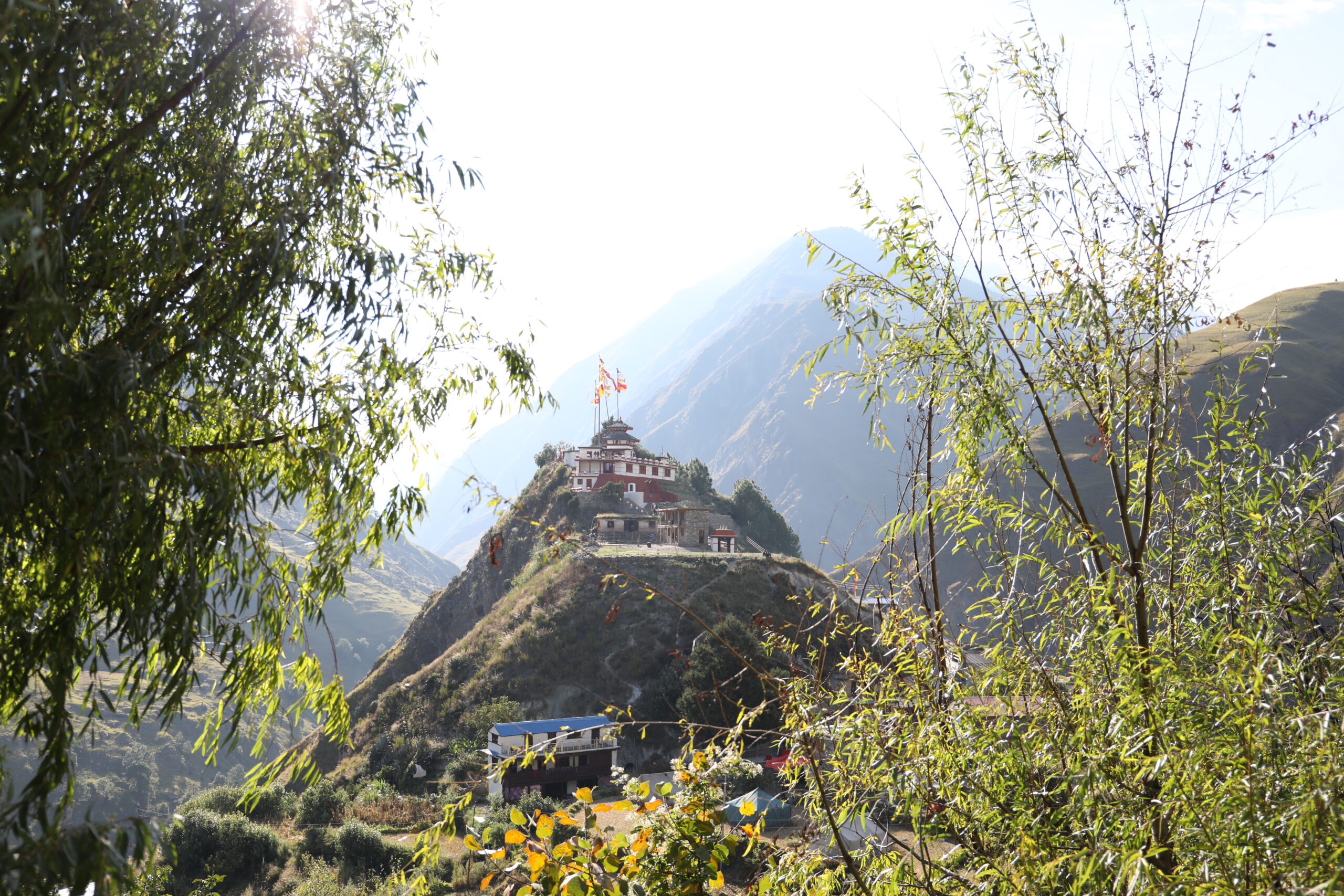History
965 years old
Tripurakot V.D.C, is the Eden of Dolpa District located at Karnali Zone North – west of Nepal. It is the small place of Nepal’s largest district Dolpa, covering the area of 104 sq Km. Its Population is 2546 among them 1251 male and 1295 women with 509 households. Most of the people constitutes Brahmin, Chhetri, Dalit and Janajati. Among 509 household 9 household is of Pujari(Priest).These priest are generations of Sukdev Neupane. The 9 household priests used to perform religious activity at temple Bala Tripura Sundari Bhagawati which is located at top of hill with regular interval of one year. During excavation work of Okhall one butterfly was hurt and changed into statue while villagers attempted to catch it. Among remaining eight butterflies, five butterflies flied to different places of Nepal and now they are established as a religious centre with different named as Kanika Sundari in Jumla district, Bagheshwori in Nepalgunj district, KhairaBang Bhagawoti in Salyan district, Tripureshwori Bhagawoti in Baitadi district and BadiMalika in Doti district. Three butterflies changed to statue while villagers attempt to catch them. Observing the transformation of butterflies to statue while attempting to catch them, villagers discussed about what to do next with those butterflies. But this happening was already dreamed by Kaji Bista, a villager.
The old view of the temple before the renovation on September 10, 2015.

View from Kaal Dhoka.

Asthami puja.
Far view of the temple.
Up to date regular worship and prayer are being done by Sukdev Neupane and his generations. Recently in the temple, Bala Tripura Sundari Bhagawati, Brahmini, Indrayeni, Vaisnavi, Barahi,Chamunda, Chandika, Astadal, AstaNaag, Queen Amrawati, and Prince Badri Shahi of King Bikram Shahi are being worshiped too. Due to the renowned exaltation of Bala Tripura Sundari Bhagawati temple PithaDhis Universe Master Shree Shankaracharya of KacnhiKamakoti, INDIA had prayed and worshiped on this temple. Similarly, Shree Khaptad Baba had received YOG SIDDHI from this temple. According to Shree Swosthani Bratakatha of Hindu religion “HIP”( Kundaulo) of SatiDevi had decayed at the place where Bala Tripura Sundari Bhagawati temple located. So this temple is one of the powerhouses of the Hindu religion and worshiped as a focal point of faith to date.
Recently, with the Aid of Indian Government, Mr.Laxmi Kant Upadhaya:a local resident living in Dunai(Headquarter of Dolpa) dedicate his life for renovation of this temple and now it is already completed.Currenlty,Mr. kanta is temple Truste persident. Thank you Indian Government and Mr.Laxmi Kant Upadhaya and all the concern Dolpali and all Bhakta(devotees ) who directly or indirectly Help to fulfill this Precious-Project to build the Temple.

View from rato dhoka.






